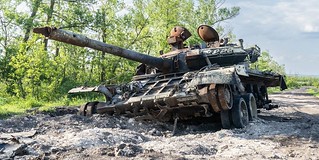Images of the air combat between a Spanish Eurofighter and an Indian Su-30
Recently, on the occasion of the Pacific Skies 2024 round-the-world flight, Spanish Eurofighter fighter aircraft were in India.
I already told you here about the deployment of the Spanish Air Force in that Asian country, and specifically about the opportunity that the pilots of the Spanish Eurofighters have had to do simulated air combat with Indian Su-30MKI fighters of Russian origin, within the framework of the multinational exercise Tarang Shakti 24. This version of the Su-30, manufactured jointly by Russia and India, has two Lyulka AL-31FP turbofan engines with vectored thrust, making it an opponent with excellent maneuverability. Ten days ago, the Air Force published this video as a summary of its visit to India:
Today, the Spanish Air Force has published this summary of the Pacific Skies 2024 round-the-world flight, which concluded a few days ago with the return to Spain of the Spanish contingent that participated in that deployment, after traveling about 58,000 kilometers, marking a new milestone for Spanish military aviation:
There are some very interesting images that appear in both videos, in their final part. It is a recording of a simulated air combat between a Spanish Eurofighter and an Indian Su-30MKI. The recording includes images taken with a camera that shows the interior of the cockpit of the Spanish fighter plane and also images of its HUD (Head-Up Display), the glass screen located on the instrument panel, which shows the pilot various flight and combat information. You can see some of these images here.

Two Su-30MKI fighters of the Indian Air Force, which has a total of 240 aircraft of this type.

Here we see one of the great advantages of the Spanish pilot: his HMSS Striker helmet, that offers the pilot the same flight and combat information as the HUD (we see this glass screen on the left) but through the helmet visor, so the pilot has that information no matter where he looks. This gives him a considerable advantage in a close air combat (what in military aviation is known as a "dogfight"). In the image we see an Indian Su-30MKI in the distance.

The Spanish pilot visually searching for his rival during the "dogfight." In this type of combat. On the pilot's left leg we see a tablet, which is attached to the leg by means of a notepad. On the right leg he carries a notepad to make handwritten notes about the flight.

A picture of the Spanish Eurofighter's HUD, with a Su-30MKI in the centre. This indicates that the Spanish pilot could have shot down the Russian-made aircraft if this had been a real combat. Most of the HUD data has been blurred by the Air Force to keep the data of this simulated combat secret.

Once the fight is over, the Spanish pilot makes the shaka sign to his Indian rival, a friendly gesture that is made by extending the thumb and little finger and folding the other three. It is a gesture that became popular in the world of surfing and from there it passed to the military world.
|
Don't miss the news and content that interest you. Receive the free daily newsletter in your email: |
- Most read
- An excellent documentary shows the inside of the B-17 Flying Fortress bomber
- A high-quality short film of the French Air Force showing its capabilities
- The problems of the VH-92A Patriot, the new US Marine One presidential helicopter
- The firearms used by the Pontifical Swiss Guard, the smallest army in the world
- Two military vehicles abandoned in the middle of a forest in the English countryside
- The new CADPAT (MT) digital camouflage of the Canadian Armed Forces
- Spanish mines used by Ukrainian defenders against Russian tanks

 ES
ES







Opina sobre esta entrada: